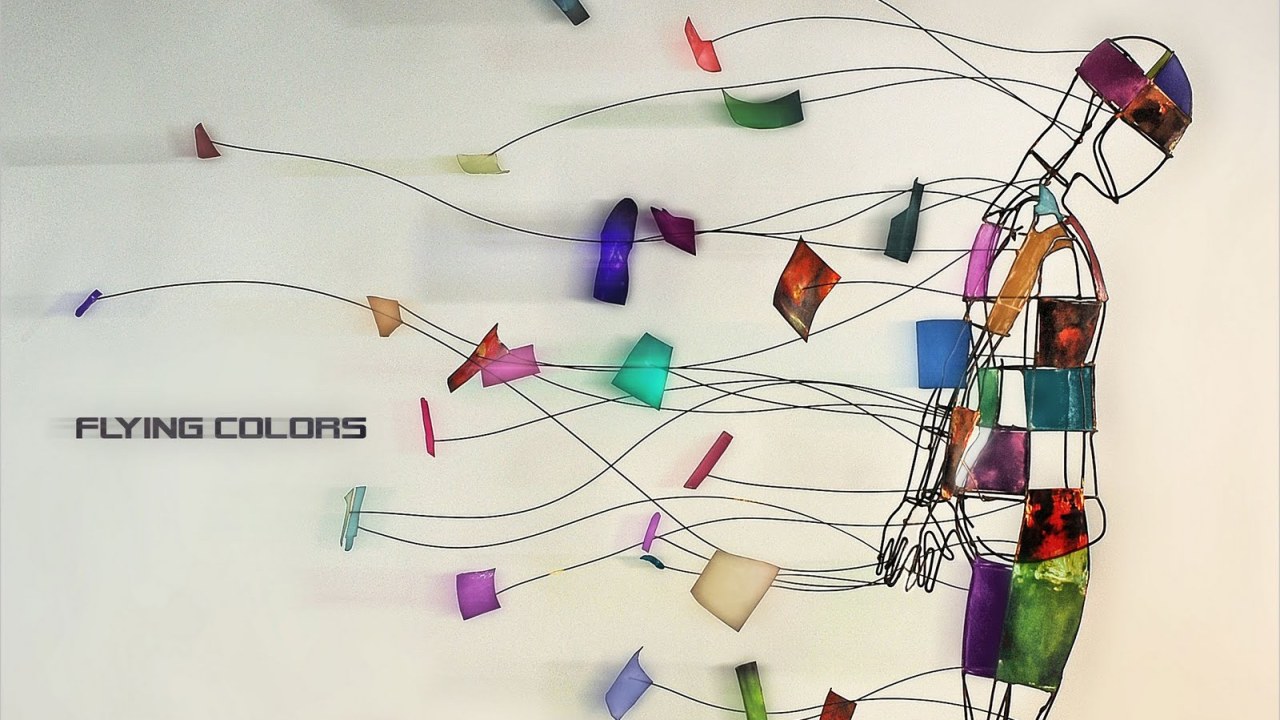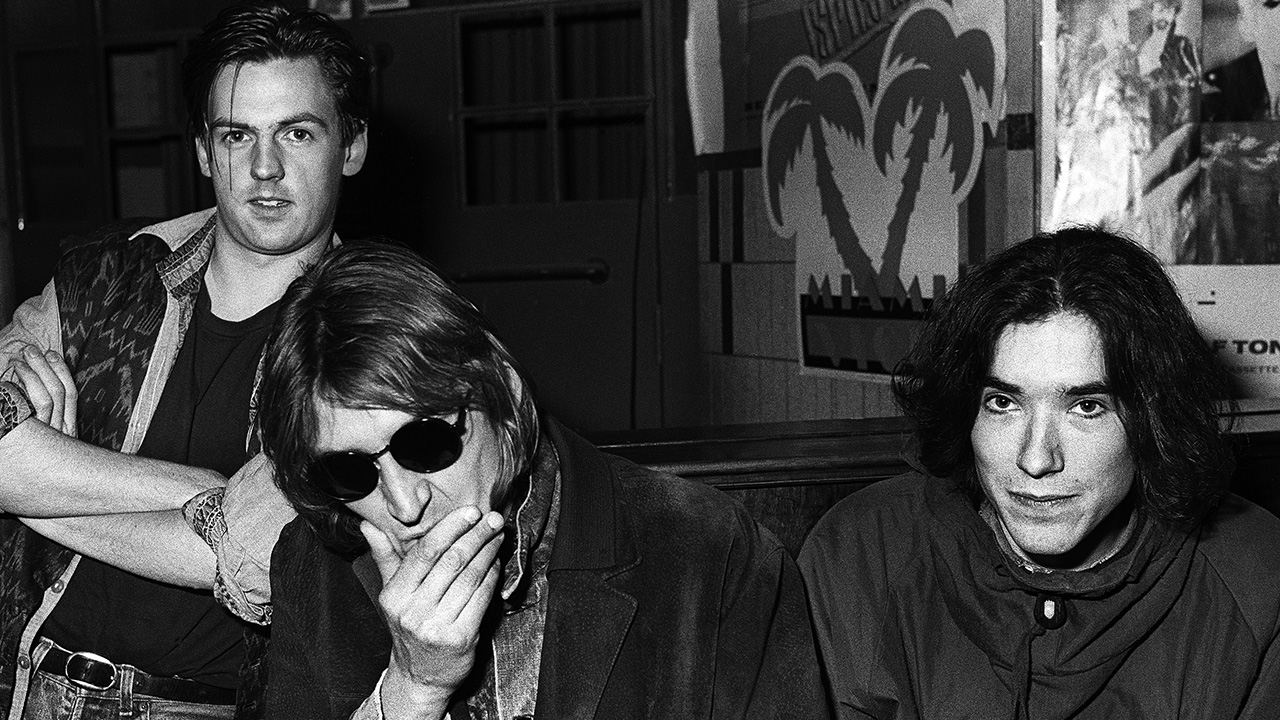You can trust Louder
And so the rehabilitation of Mike Portnoy continues... Despite the fact that Flying Colors is the ex-Dream Theater drummer’s first widely released music since his 2010 cameo on Avenged Sevenfold’s Nightmare, the band is, in fact, an outfit initially built around keyboard player Neal Morse and guitarist Steve Morse, into which the mercurial Portnoy was unsurprisingly drafted. Not that most of our readers will see this as anything other than a vehicle for Portnoy’s considerable talents, given his status as prog crusader and campaigner.
The danger with this, of course, is that too many prog fans can’t see beyond Portnoy as the one-time mainstay of Dream Theater and driving force behind Transatlantic. And yet as the man himself eagerly points out, the music he creates today is deliberately far removed from that which he has done before. And why on earth would Portnoy wish to create a Dream Theater MKII? Or even replicate the classic prog sound of Transatlantic? He’s already achieved the former with some aplomb, and the latter remain a going concern.
To fully appreciate whatever musical endeavours the drummer is now involved with, a more open minded approach is going to be needed lest the internet, full enough of tedious trolls already, explodes with more tantrums and tears before bedtime. Thus, if Adrenaline Mob is the not entirely successful attempt to play the groove metal card, his quartet with Billy Sheehan, Derek Sherinian and Tony MacAlpine offers the chance for some intent instrumental jamming à la Liquid Tension Experiment and that power trio with John Sykes never came off, Flying Colors is by far and away the most intriguing of current projects Portnoy is involved with.
From the off, the pre-release whispers were throwing up names like Radiohead and Muse, and of melding the genres of prog, pop and even metal. Enough certainly to bring forth derisive snorts from some purists before they’d even heard a note, but given the aforementioned desire to do something different again, this is surely an approach that should be celebrated? Fortunately, given the general reaction from many people who heard the balladic, Beatlesy Everything Changes from last issue’s covermount, more than a few of you seem to think so.
Yet Everything Changes falls in the middle of the debut, by which time you’ve been adequately introduced to the variant shades of Flying Colors. And it has to be said, what a deft display of songwriting and musicianship this entire album is. Not that, given the matching up of the aforementioned players, plus Steve Morse’s Dixie Dregs bassist David LaRue and vocalist Casey McPherson, you’d expect anything less. At every turn these guys both dazzle and demand your respect, be it the playful nature of the lead into opening cut Blue Ocean, or a dextrous bass fill from LaRue that lights up Forever In A Daze. Sonically, with production from onetime Rush man Peter Collins, Flying Colors sounds amazing!
And yet it’s not just the musical accomplishments of the protagonists that makes this such a spellbinding work. The songwriting is what truly helps place Flying Colors into a different space. Built around strong hooks and memorable melodies, you’re unlikely to find such a strong blend of progressive musicianship and radio-friendly material. The latter is wholly enforced by the presence of the little known McPherson, whom Portnoy, already a fan of the singer from his days with Endochine and more recently Alpha Rev, personally brought to the project. His roots might be firmly in more alternative forms of rock, but his performance on Flying Colors marks his out as one of the finest of musical discoveries.
If there’s one thing that tends to jar just a little it is that perhaps the band’s influences, be they playfully intended or not, are occasionally worn too obviously on their collective sleeves. Opener Blue Ocean rides in on the Doors’ LA Woman riff, deploying a dash of Joe Jackson’s Stepping Out before some Steely Dan-like guitar from Morse (Steve) takes it off on a more fascinating journey. Shoulda Coulda Woulda follows – a ballsy rocker that sometimes seems too close to Velvet Revolver’s Slither for comfort. Likewise Love Is What I’m Waiting For plays an evident Killer Queen hand and the energetic All Falls Down has Muse written all over it in very B-I-G letters. Then to hear the melody line from The Eagles’ Take It To The Limit crop up in Fool In My Heart, well… Fleeting moments maybe, but distracting nonetheless.
Sign up below to get the latest from Prog, plus exclusive special offers, direct to your inbox!
Which is a pity. Because there is more than enough here that enables Flying Colors to stand on their own two feet. And, that like album closer the 12-minute prog-out of Infinite Fire proves, delight compellingly in their own right.
Writer and broadcaster Jerry Ewing is the Editor of Prog Magazine which he founded for Future Publishing in 2009. He grew up in Sydney and began his writing career in London for Metal Forces magazine in 1989. He has since written for Metal Hammer, Maxim, Vox, Stuff and Bizarre magazines, among others. He created and edited Classic Rock Magazine for Dennis Publishing in 1998 and is the author of a variety of books on both music and sport, including Wonderous Stories; A Journey Through The Landscape Of Progressive Rock.


